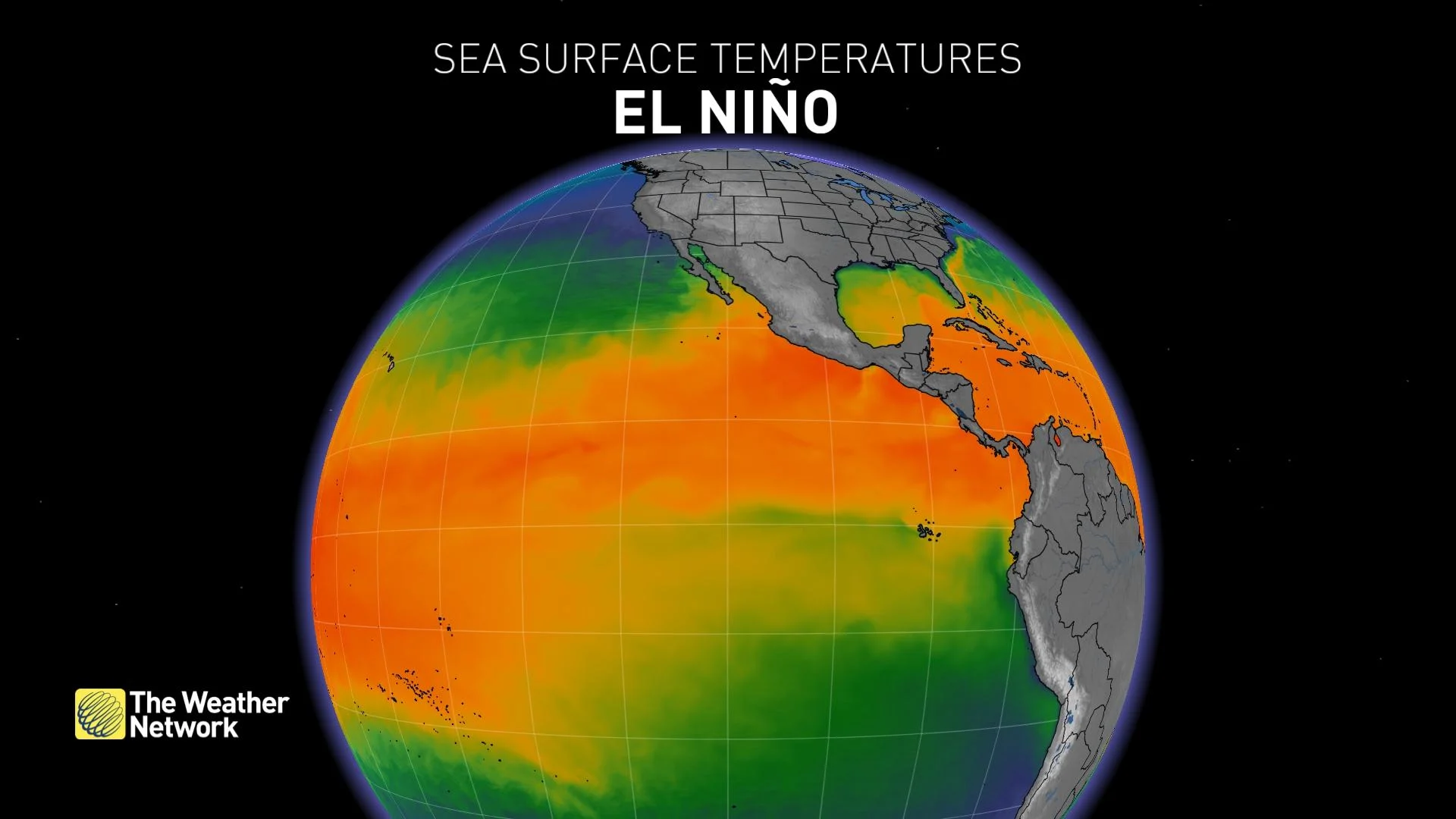
Snowbirds face a stormy winter as El Niño influences U.S. patterns
El Niño will flex its influence over the United States this year, potentially setting up cooler and wetter conditions across the southern states
The best part of winter for many Canadians is heading south where summer likes to hang on straight through the holidays.
But snowbirds migrating south of the border this year might find a bit more winter than they bargained for thanks to El Niño flexing its influence across the United States in the months ahead.
An active storm track and intrusions of cooler temperatures might make for an unsettled—and at times tumultuous—winter season for much of the southern U.S., especially across the Florida peninsula.
WINTER 2024: El Niño will play a critical role in the weeks ahead
El Niño’s influence is the true wild card
El Niño’s pattern of unusually warm waters in the eastern Pacific Ocean sends a ripple effect through the atmosphere that slices right through North American winters.

We’re diving head-first into a strong El Niño this winter, with sea surface temperatures around the equator off the western shores of South America clocking in at nearly 2.0°C above normal.
Canadians are well-acquainted with El Niño winters. Warmer waters in the Pacific send the jet stream jutting farther north than normal, allowing ridges to bring dry and warm conditions to Western Canada while the jet stream diving back south keeps conditions cold and unsettled back east.
This general pattern extends into the northern U.S. as well, but much of the country falls under the influence of the subtropical jet stream during an El Niño winter. This jet stream spreads across the southern U.S. in the winter, and it tends to strengthen and grow wavy during strong El Niños.

Our upcoming winter will likely endure a similar pattern to El Niño winters in the past, but this year’s heating in the Pacific is unlike anything we’ve seen before. Given this year’s unique flair, we may see patterns that don’t fit the typical mold.
Storms likely from California to Florida
A powerful and wavy subtropical jet stream increases the opportunity for stormy weather across the southern half of the U.S., stretching straight from California toward the Atlantic coast.
Multiple atmospheric rivers will likely bring drenching rains to the U.S. West Coast, which is a common feature during strong El Niño seasons. Previous years with similar heating in the Pacific, such as 1997-98 and 2018-19, walloped the coast with tremendous rains and mountain snows.

Visit our Complete Guide to Winter for an in-depth look at the Winter Forecast, tips to plan for it and much more!
The storm track rolling ashore in the Golden State will continue inland, likely bringing cooler- and wetter-than-normal conditions to places like Arizona and New Mexico.
A southerly storm track will also increase the opportunities for sprawling low-pressure systems to develop around Texas and the Gulf of Mexico. These storms are notorious for their ability to produce wicked snows and destructive ice up north, but they’re no picnic for the southern states, either.
Florida can get hit particularly hard by Gulf lows and budding nor’easters off the Atlantic coast. While the Sunshine State (usually!) misses the snow from these systems, flooding rains, high winds, and dangerous severe thunderstorms are common during the heart of the winter.
Some of Florida’s worst tornadoes have occurred in the winter as strengthening lows spark intense severe thunderstorm outbreaks.
Whether you’re at the beach, visiting family, or kicking it at a theme park, make sure you’ve got a severe weather plan, a safe place to quickly take cover, and a way to receive severe weather warnings the moment they’re issued.

The southern states aren’t immune from frigid weather, either. Forecasters see hints that the polar vortex will be on the move toward the middle and latter half of the upcoming season. Strong cold fronts can easily extend all the way down the Gulf of Mexico, bringing lows colder than -5°C to the Gulf coast while subfreezing temperatures dip deep into the heart of Florida.
If you’re heading south of the border this winter—whether just for a few days or the entire season—stay on top of local conditions, especially in a potentially changeable season like the one we’re entering now.










